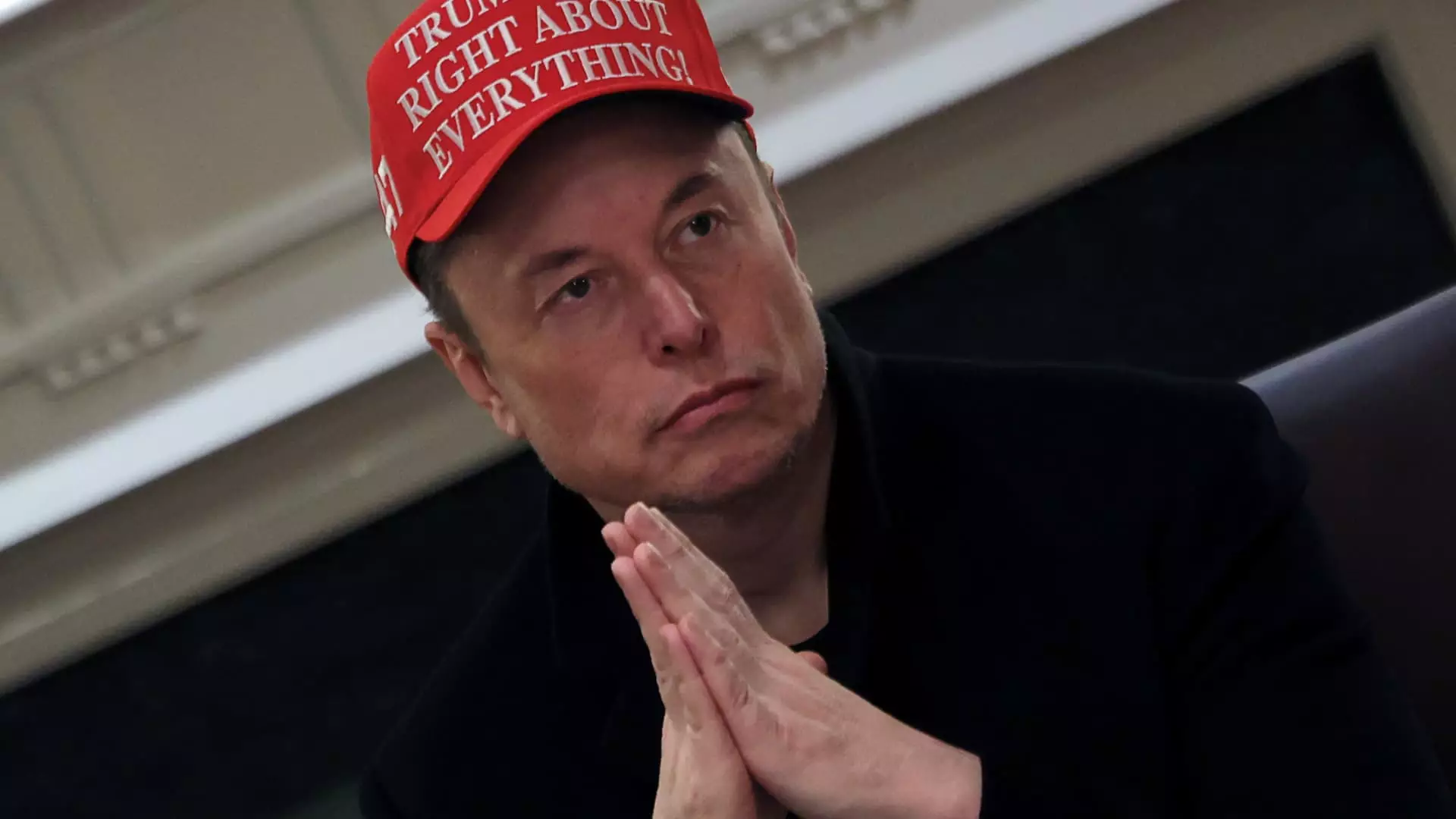In an era defined by unprecedented volatility in the stock market, Tesla’s erratic behavior stands out, resembling a thrilling yet terrifying rollercoaster ride. Just a day after achieving an impressive 23% gain—the kind of spike that gets investors excited—Tesla’s shares crumbled by a staggering 7.3%, closing at $252.40. The downturn is not just an abnormality but part of a worrying trend, with Tesla’s stock plummeting a remarkable 38% this year alone. For a company once celebrated as a market darling, these drastic fluctuations raise serious questions about its future stability and leadership.
Trump’s Trade Turmoil: A Double-Edged Sword
The recent market movements are inextricably linked to President Donald Trump’s unpredictable trade policies. His announcement aimed at pausing steep tariffs propelled stocks upward, but the winds shifted quickly once more. With clarifications showing China’s tariff rate reaching an eye-watering 145%, the turbulent landscape has made Tesla particularly vulnerable. Analysts—once brimming with bullish outlooks—are hedging their bets. Institutions like UBS and Goldman Sachs have slashed price targets, aligning themselves with the sentiment that Tesla’s lofty valuation does not match its fiscal realities in a marketplace riddled with uncertainty.
The inconsistency in Trump’s administration has left a trail of confusion; Tesla’s fortunes seem to hang precariously on whether the President decides to play hardball or make concessions. It’s a moment of reckoning for investors who were captivated by the brand’s potential.
Competition and Market Share Woes
Another layer of complexity is Tesla’s competition. The electric vehicle (EV) market is rapidly evolving, with established car manufacturers racing to capture their share. Toyota, Ford, and even traditional German automakers are ramping up their EV production, effectively saturating the market. Meanwhile, Tesla’s sales in Europe have started to dwindle, raising concerns about its once-commanding market presence. The recent data from the European Automobile Manufacturers’ Association signifies an unsettling trend that Tesla is no longer the undisputed leader in the EV realm.
With competitors upping their game, the mere allure of Tesla’s brand and technology may not be enough to retain consumer interest. The announcement of tariffs comes at a time when consumers are being offered competitive pricing—price-sensitive buyers are unlikely to remain loyal to a brand that might soon be burdened by heightened costs.
CEO Elon Musk: A Controversial Figure
Elon Musk’s volatile leadership style only intensifies the issues facing Tesla. Once viewed as a visionary and charismatic leader, Musk has stumbled into controversy, making headlines not just for his innovative endeavors but also for his politically charged comments. His ties with the Trump administration, while advantageous in some respects, have drawn ire and skepticism. His public feud with Peter Navarro, Trump’s trade advisor, showcased not only his frustration with trade policies but also his tendency to lash out publicly.
The implications of these interactions are dire; Musk’s actions risk damaging Tesla’s brand reputation. When a CEO engages in combative rhetoric instead of advocating for the company’s needs and navigating turmoil diplomatically, it raises red flags for current and potential investors.
Imminent Danger with Supply Chains
Tesla’s reliance on international supply chains creates further vulnerabilities, particularly against the backdrop of impending tariffs. Key inputs for Tesla’s vehicle manufacturing are sourced from China and Mexico—countries now facing increased tariffs. The ripple effects could severely impact Tesla’s margins, leading to increasing production costs that could further erode profitability. If Tesla fails to navigate this complex web of supply chain dependencies and governmental restrictions, it teeters on the brink of losing its competitive edge.
As Tesla faces rising costs and declining sales in multiple markets, the question remains: can the once-great automaker adapt in time to stave off financial disaster? Stakeholders are left apprehensively watching this unfolding drama, hoping for clarity yet feeling the weight of uncertainty looming overhead.

